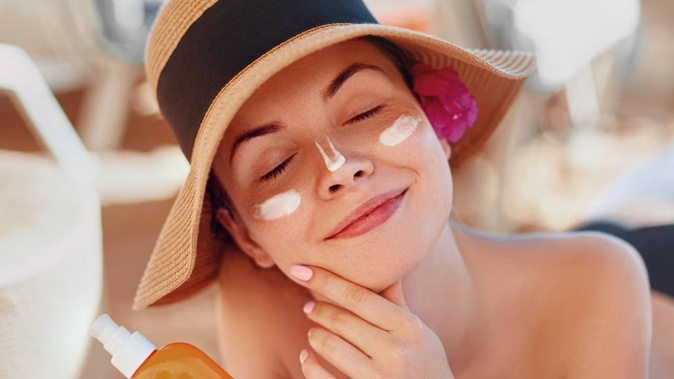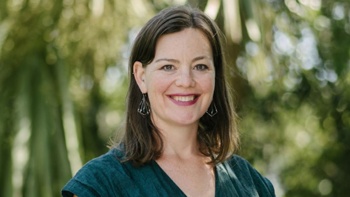
By Katie Kenny of RNZ.
“If I could offer you only one tip for the future, sunscreen would be it.
“The long-term benefits of sunscreen have been proven by scientists, whereas the rest of my advice has no basis more reliable than my own meandering experience.”
So says the 1997 spoken-word song Everybody’s Free (To Wear Sunscreen) by Baz Luhrmann, based on an essay by Mary Schmich.
What was then a no-brainer piece of health advice has in some circles become controversial thanks to social media influencers, activist groups and marketers.
The queries raised - often about vitamin D deficiency, sunscreen ingredients, and allergies - aren’t new. But every summer, misinformation about sunscreen seems to grow and spread. A bit like cancer.
This is particularly concerning in Aotearoa New Zealand and Australia, where rates of melanoma, the deadliest of the common forms of skin cancer, are the highest in the world. Around 350 New Zealanders die from melanoma each year.
But mistrust isn’t the only problem. Most people who use sunscreen simply don’t apply enough, according to dermatologists.
Skin cancer
The three main types of skin cancers are squamous cell carcinoma, basal cell carcinoma, and melanoma.
Most skin cancer is caused by too much exposure to ultraviolet (UV) radiation, making it one of the most preventable cancers.
New Zealand’s UV levels during summer are higher than at corresponding latitudes in the northern hemisphere, according to National Institute of Water and Atmospheric Research (Niwa).
The Australasian College of Dermatologists recommends people reduce their risk by minimising exposure to excessive UV from the sun, wearing protective clothing such as broad-brimmed hats and sunglasses, and using a sunscreen that is SPF 50 or higher, broad-spectrum and water-resistant.
Babies under 6 months old should avoid direct sunlight.
Other risk factors for skin cancer include a family history of skin cancer and a skin type that burns easily.
Sunscreen
Let’s go back to basics. Sunscreens are topical agents that can be applied to the skin to protect against UV radiation, a contributor to skin ageing and the main cause of skin cancer.
But you shouldn’t rely on sunscreen alone to protect you from the sun.
“First and foremost, appropriate clothing and hats should be used whenever possible and sunscreen used when the skin cannot be covered,” Dr Scott Barker, a consultant dermatologist and New Zealand Dermatological Society president-elect, told RNZ.
Sunscreens are often categorised as either “physical” or “chemical”, depending on their ingredients and how they work. Both provide protection primarily by absorbing UV radiation.
/cloudfront-ap-southeast-2.images.arcpublishing.com/nzme/7ZFTBCP4XBBATAKW3T6ITUPXHE.jpg)
With the range of products on offer, how do you choose a sunscreen that's right for you? Photo / 123rf
SPF
Sun protection factor (SPF) ratings tell us how well sunscreen protects skin against sunburn. (No sunscreen blocks 100 per cent of the sun’s rays.)
Without getting too technical, SPF is the ratio of the UV radiation dose it takes to cause sunburn on skin treated with sunscreen versus that required for untreated skin.
It is important to clarify it is not related to time of solar exposure but to amount of solar exposure. We know it takes less time to be exposed to the same amount of solar energy at midday compared to early morning or late evening. And solar intensity is also related to geographic location.
The higher the SPF number, the better the expected protection.
“It is true that a broad-spectrum [sunscreen] with a higher SPF will give better protection for longer against UV damage, so an SPF 50 will be better than an SPF 30,” Barker said.
Sunburn is most often a result of exposure to ultraviolet B (UVB) rays, while ultraviolet A (UVA) rays are known to cause skin damage. A “broad-spectrum” sunscreen is one that protects against both.
Vitamin D
Exposure to sunlight is the main source of vitamin D for most people. Often called the sunshine vitamin, it plays a key role in bone health. It also affects inflammation, autoimmune disease risk, heart health and cognitive function.
A common worry is whether sunscreen inhibits vitamin D absorption.
“In lab experimental studies, sunscreens do reduce the production of vitamin D from artificial UV light,” Barker said.
“However, real-world trials with medium SPF [levels] have not shown this. Neither have real-world observational studies with higher SPF sunscreens.”
In conclusion: “While there may be a theoretical risk, in daily use the risk is so low that concerns about vitamin D should not negate skin cancer prevention advice.”
Ingredients
The United States Food and Drug Administration has published data suggesting chemical sunscreen ingredients can soak into your bloodstream.
Animal and in-vitro studies have also demonstrated some sunscreen agents, such as homosalate, oxybenzone and octinoxate, have the potential to affect endocrine activity.
Research into these findings is ongoing. The FDA has said the results did not mean the ingredients were unsafe and people should continue to use sunscreens.
Safety queries relating to zinc oxide and titanium dioxide nanoparticles being cancer-causing, for example, have also been raised.
“Evidence suggests that some chemical sunscreen ingredients and some nanoparticles of zinc and titanium can be systemically absorbed, but there is no good evidence it is harmful,” Barker said.
Skin cancer, on the other hand, is a known risk.
“Regulatory authorities do monitor this data and universally regard the benefit as outweighing the risk.”
/cloudfront-ap-southeast-2.images.arcpublishing.com/nzme/YEHNGFQJOJDKBOQ3GFPVJH5YIU.jpg)
It's important to protect yourself with a hat and stay in the shade to prevent sunburn. Photo / 123rf
Allergies
Reactions to sunscreen are rare.
Side effects of sunscreen can include stinging following application, skin irritation and rashes (usually a contact dermatitis), according to DermNet New Zealand.
Zinc oxide and titanium dioxide may be less likely to cause irritation than chemical sunscreens. These are generally recommended for young children.
“Some people may develop an allergic reaction to some chemical filters in sunscreen,” Baker said. “If it is suspected, dermatologists can test for this. Sunscreens that avoid the chemicals inducing the allergy can then be used.”
Choosing one
Ideally, choose a water-resistant, broad-spectrum sunscreen of at least SPF 30. But perhaps more important is finding one you will consistently use and reapply.
You might want a different product for your face than elsewhere, for example. One for the beach and another for playing sports.
The most important thing is to apply enough, Barker said.
“Most people don’t apply enough. Dermatologists do, and most people who’ve had many skin cancers do, but most people don’t until they start getting the skin cancers. It is most important to find a sunscreen that you personally like the feel of, so you do end up applying enough.”
What about aerosol sunscreens? Avoid them, Australia’s Cancer Council recommends. Studies show it’s difficult to get good levels of UV protection from spray-on sunscreens. Use a cream or lotion instead.
- RNZ
Take your Radio, Podcasts and Music with you









